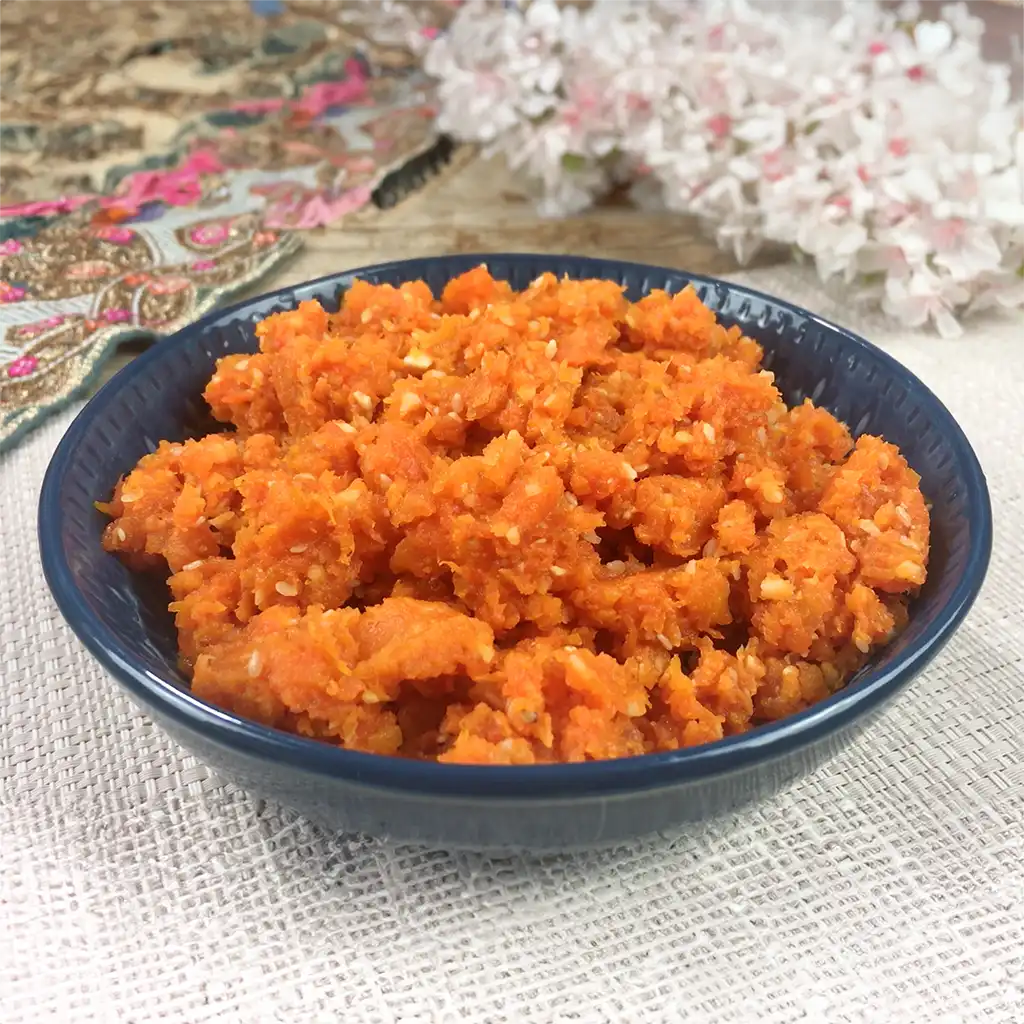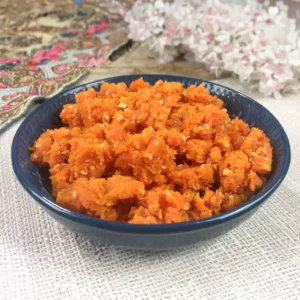
Gajrela, a traditional Indian dessert, is a delightful treat that captivates with its rich flavors and comforting warmth.
Originating from the vibrant kitchens of India, this recipe has been cherished for generations, passed down through families as a symbol of love and celebration.
Crafting gajrela may seem intimidating at first, but fear not, as its preparation is simpler than it appears. With its roots deeply embedded in Indian culture, this dessert blends the earthy sweetness of carrots with the creamy richness of milk and the nutty crunch of almonds, cashews, and pistachios.
The fusion of these ingredients creates a symphony of flavors that dance on your palate, offering a perfect balance of sweetness and texture.
Expert Tip: Adjust the amount of sugar according to your preference for sweetness, keeping in mind that the carrots will also contribute natural sweetness to the dessert.
Butter: Butter adds a rich and creamy texture to the gajrela, enhancing its overall flavor profile. It helps to create a luscious base for cooking the carrots, ensuring they’re cooked to perfection and infused with buttery goodness.
Carrots: Carrots bring a natural sweetness and vibrant color to the gajrela. They’re grated and cooked until tender, releasing their sweetness and melding beautifully with the other ingredients.
Sugar: Sugar is essential for sweetening the gajrela, balancing out the natural sweetness of the carrots and adding a delightful caramelized flavor. It dissolves into the mixture, infusing every bite with irresistible sweetness.
Milk: Milk forms the creamy base of the gajrela, providing richness and depth of flavor. It cooks down slowly, infusing the carrots with its creamy goodness and creating a luxurious texture.
Cashews, Almonds, Pistachios: These nuts not only add a delightful crunch to the gajrela but also contribute to its nutty flavor profile. Toasted to perfection and used as a garnish, they elevate the dessert with their nuttiness and provide a satisfying contrast to the creamy texture of the dish.
Expert Tip: Ensure to grate the carrots finely for a smoother texture in the gajrela.
Expert Tip: Be patient while cooking the carrots in milk, allowing them to absorb the flavors and soften gradually.
Yes, you can substitute condensed milk for regular milk for a richer and creamier gajrela. Adjust the amount of sugar accordingly to balance the sweetness.
Gajrela can be stored in the refrigerator for up to 3-4 days in an airtight container. Reheat gently on the stove or in the microwave before serving.
Absolutely! Feel free to customize your gajrela with your favorite nuts such as walnuts, pecans, or even dried fruits like raisins or chopped dates.
Here are some more recipes for you to enjoy! If you my recipes don’t forget to rate and leave a comment.
If you have any recipe suggestions, please do not hesitate to ask me. A great way to stay in contact with me is through Instagram, Facebook, Twitter and YouTube. Don’t forget to tag me @CookwithNabeela in your recipe photos!

Subscribe now to receive my latest recipes directly in your inbox. Stay up-to-date and never miss out!

I love to cook! I want to share with you my favourite, delicious family-friendly recipes. I want to inspire you to create fantastic food for your family every day.
Latest comments (1)
Hi, thank you for this amazing recipe. I also shared a similar recipe of Shahi Gajrela, if you would have a look, I would appreciate it. Thank you.